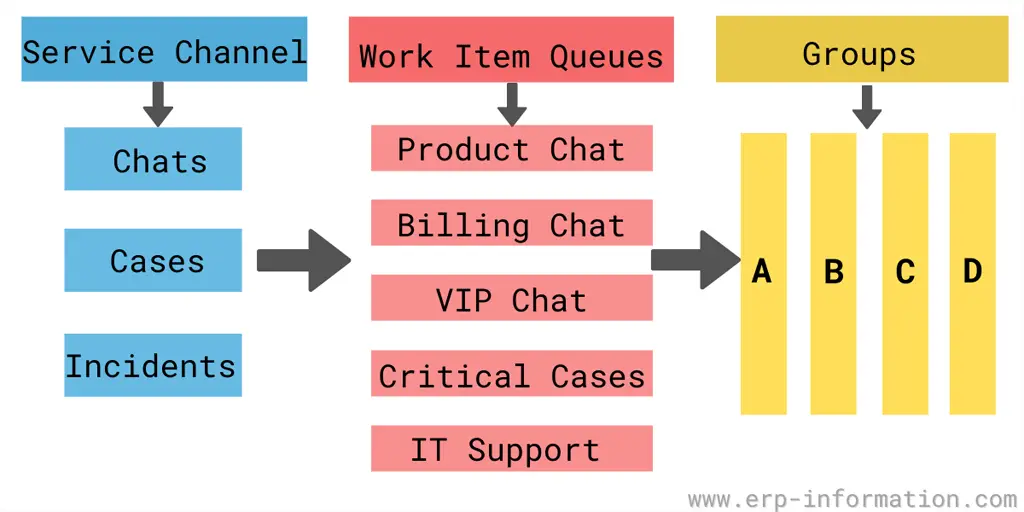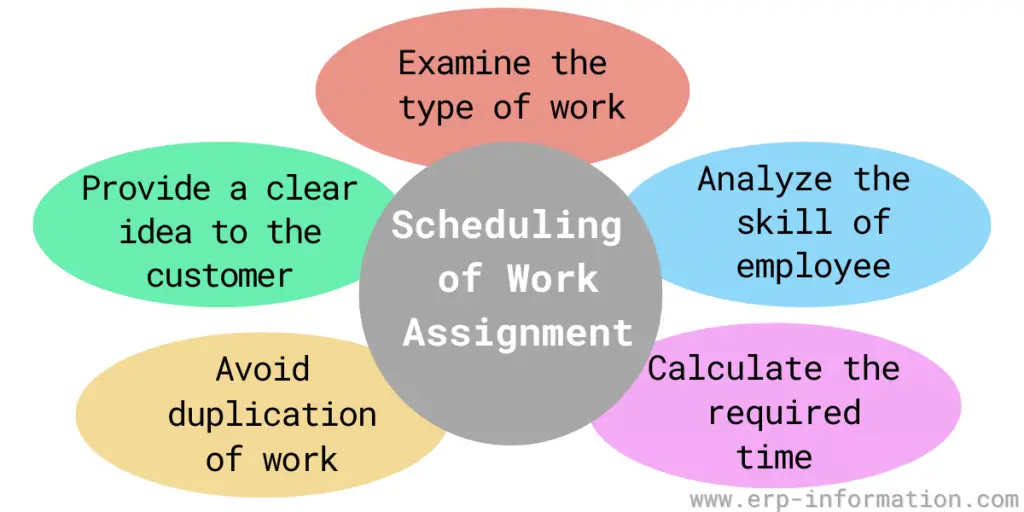
Work assignment, a fundamental concept of professional realms, refers to allocating specific tasks or duties to individuals or teams within a certain timeframe.
These assignments, which can range from simple tasks to complex projects, serve as the backbone of productivity, facilitating the efficient functioning of an organization.
By clearly defining roles, responsibilities, and deadlines, work assignments ensure that each member is aware of their contribution towards the broader objectives.
This post will explain the work assignment, its scheduling, and its benefits. It will also discuss automated and advanced work assignments.
What is a Work Assignment?
A work assignment or job assignment refers to a task or set of tasks allocated to work centers, an individual, or a team within a specific timeframe. Depending on the context, it can be part of a larger project or an isolated task.
It helps distribute the workload evenly among team members, ensuring everyone knows their responsibilities and keeping track of progress toward goals.
Automated Work Assignment
Automated assignment of work helps to reduce the stress on employees. It saves the project manager time because the auto-assignment manager does not need to remind his team about the work. The system only gives notifications to the team.
Automated work assignment is when a computer system assigns work to employees based on predefined criteria in an automatic workflow. This can include skills required for the task, availability of employees, and other factors.
The use of automated work assignments can help to improve efficiency and accuracy within an organization.
Managers can efficiently assign work to minimize downtime and maximize productivity by considering employees’ individual skills and availability.
Automated systems can also help to ensure that tasks are appropriately distributed among employees, thus avoiding potential conflicts.
The advantage of the automatic assignment is it helps to deliver the project faster by avoiding confusion and rework because the task is assigned when all the requirements are entirely available.
Advanced Work Assignment
Advanced Work Assignment (AWA) is a methodology organizations use to create and assign work tasks to employees based on their skills, abilities, and interests.
This approach can help improve employee productivity and satisfaction while reducing organizational costs.
It can effectively engage employees in their work and maximize their potential when appropriately implemented.
One of the critical benefits of it is that it allows organizations to optimize their resources and assign work that is most suited to each employee’s skills, abilities, and interests.
This helps improve productivity by ensuring employees are matched with tasks they can complete while fostering engagement and satisfaction.
Additionally, it can help reduce organizational costs by ensuring that employees are assigned work within their abilities and do not require excessive training or support.
Despite these benefits, some potential challenges are associated with using AWA.
For example, employees may sometimes resist or feel uncomfortable with being assigned work outside their comfort zone or feel they are not allowed to develop new skills.
Additionally, accurately assessing each employee’s skills and interests can be challenging, leading to some employees being assigned work that is not well-suited.
Therefore, it is essential to carefully consider whether or not AWA is right for your organization before implementing it.
When appropriately used, Advanced Work Assignments can effectively improve employee productivity and satisfaction while reducing organizational costs.
Scheduling of Work Assignment
When you are using a computerized system to schedule work, it is essential to know that some factors affect employees’ performance before uploading the names of employees in the system.
This includes understanding how these applications operate and considering what kind of factor affects them most when deciding which option will be best suited for your business needs!
You can utilize manual assignment or auto-assignment for scheduling once you get it.
The following are some tips for scheduling the assignment.
1. Examine the type of work
It is crucial to find out the type of work. For example, some work has to be done in one department. However, some work must be divided between the different departments, and those departments must develop internal work procedures.
2. Analyze the skills of the employees
Each employee has their talent. So before scheduling the work, making one flowchart of the work process is better.
After analyzing employees’ skills, assign the work in the flowchart to the specified employees. Also, keep one backup person if the designated employee cannot perform the job.
3. Calculate the required time
Go through the flowchart and calculate the time required for each stage of the work or project to streamline the work process and complete the job efficiently.
4. Avoid the duplication of work
When you assign laborers to different fundamental processes, there will be a chance of duplicating work because all the laborers do jobs not mentioned in the flow chart.
Hence, carefully check the workflow across the organization and ensure there is no work duplication.
5. Provide a clear idea to the customer
Provide a clear idea to the customer about communication. That means informing him clearly to whom he should communicate to get information about the project and assigning a specified person.
Considering customers’ expectations is critical to set company standards. It helps to learn the market standards also. It will be achievable when you do a proper work assignment.
Important Information that Works Assignment Contains
Work assignment contains mainly these four essential pieces of information. They are
- Which task is to be done: Clearly explain to the employees which task to be taken based on priority.
- The reason for doing that task: When you assign new work to the employees before completing current work, you need to explain its reason.
- What standards should completed tasks meet: Let employees know about the evaluation of the completed job.
- All-motive directions: This means telling the employees to inform their managers about the completed task and the problems they face while doing the tasks.
Benefits of work assignment
- It is easy to track who is responsible for which work.
- It contains some information like which task to be done as per the priority, what must be the standards of the completed task, etc. It helps the assigned person to do the job efficiently.
- By assigning work to a particular team or a person, they know which work to do as per the priority and do that work efficiently to increase customer satisfaction.
FAQs
What are the components of Advanced Work Assignment (AWA)?
The components of Advanced Work Assignment (AWA) are:
-Work Instructional Package (WIP)
-Task Guide
-Performers Instructions
-Standard Operating Procedure (SOP)
-Work Area Layout diagram.
What is Standard Operating Procedure (SOP)?
Standard Operating Procedure (SOP), often shortened to “the SOP,” is a standardized plan adopted by an organization for the orderly and efficient carrying out of various activities such as work, production, or services.
The SOP is a company-wide standard that includes everything from greeting coworkers in the morning to what to do if there’s a fire.
While it may appear overly restrictive at times, its goal is to minimize variation and mistakes. Every business activity has at least one best practice that can lead to success and efficiency if adhered to deliberately and consistently.
What is a Work Instructional Package (WIP)?
A Work Instructional Package (WIP) is a document that provides step-by-step instructions for performing a specific job or task. It may also include diagrams, photographs, and illustrations to help clarify the steps involved.
WIPs are generally used in manufacturing and production settings but can also be helpful in other types of workplaces.
For example, if you work in an office and need to learn how to use a new software program, your company might provide a WIP outlining the steps to install and configure the software.
Conclusion
The proliferation of technology has led to an increased demand for automation. Companies have found a balance between humans and machines using automated work assignment software, or AWA. Automatic job assignments can be used in many industries, from IT support to sales call centers.

